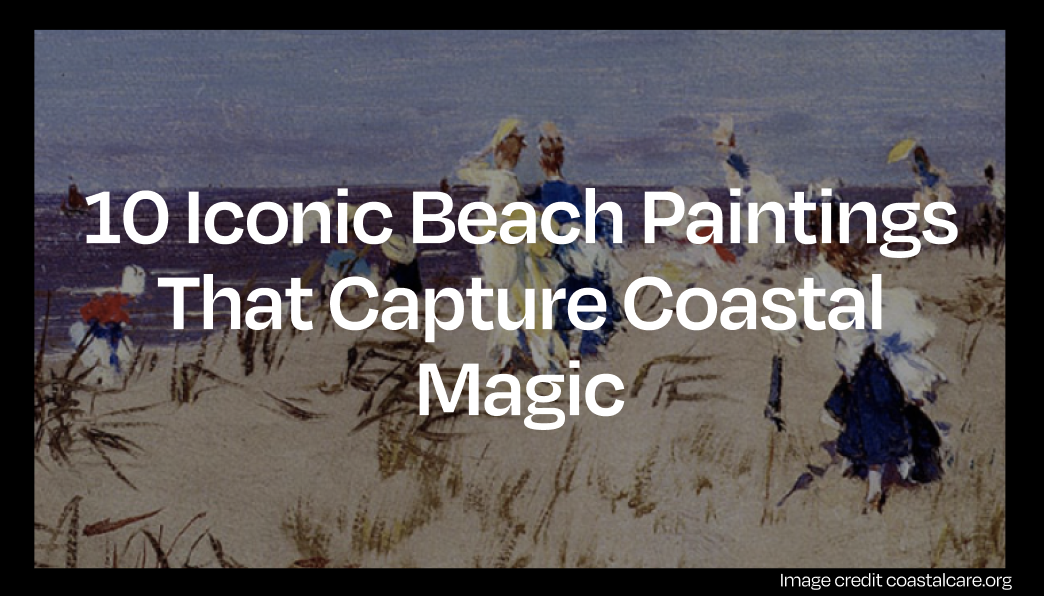
10 Iconic Beach Paintings That Capture Coastal Magic
The allure of a beach painting has inspired artists for centuries, beckoning them to capture the mesmerising dance of waves, the warmth of sunlight on sand, and the ever-changing coastal landscapes. From serene sunsets to lively beach scenes, beach paintings have carved a niche in the art world.
- “Starry Night Over the Rhône” by Vincent van Gogh

While not exclusively a beach painting, “Starry Night Over the Rhône” by Vincent van Gogh evokes the ethereal beauty of the night sky reflected on water. Van Gogh, known for his distinctive swirling brushstrokes, painted this masterpiece along the banks of the Rhône River in Arles, France. The twinkling stars and rippling water create an enchanting atmosphere, transporting the viewer to the edge of the riverbank. While not a traditional beach scene, this painting captures the magical quality of coastal nights, where the celestial and earthly elements converge.
- “Bathing at Asnières” by Georges Seurat
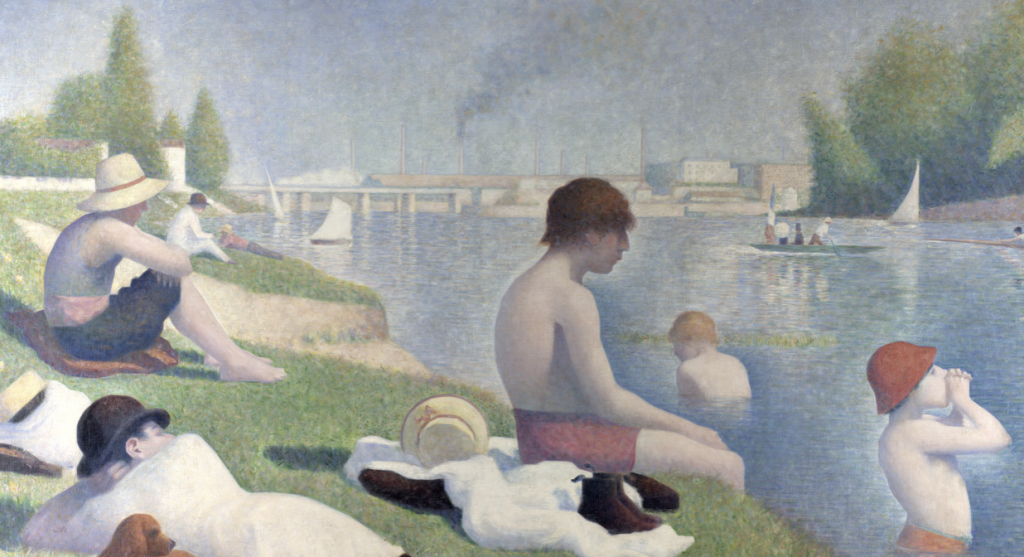
Georges Seurat, a pioneer of pointillism, painted “Bathing at Asnières” in 1884, showcasing a sunny day along the Seine River in Asnières-sur-Seine, a suburb of Paris. The painting depicts a leisurely scene of bathers along the riverbank, basking in the warm sunlight. Seurat’s meticulous dots of colour create a luminous effect, emphasising the vibrant, sunlit atmosphere. While not a traditional beach, the riverbank setting and the leisurely ambiance make it a captivating precursor to the beach scenes that would later become popular in art.
- “Prout’s Neck, Breaking Wave” by Winslow Homer
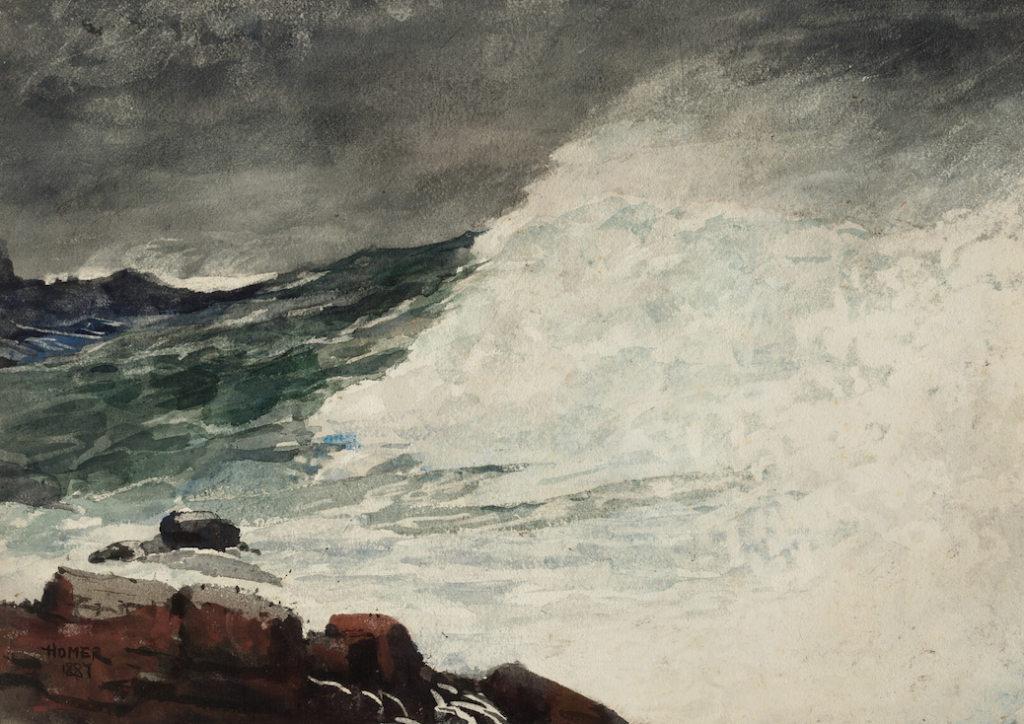
Winslow Homer, a master of marine art, crafted “The Wave” in 1887, illustrating the raw power and beauty of the sea. This beach painting captures the moment just before a crashing wave consumes a rocky shore. Homer’s expert rendering of light and movement adds a dynamic quality to the scene, making viewers feel the spray of the ocean and the force of the tide. “The Wave” is a testament to Homer’s ability to convey the sheer force of nature through the canvas.
- “The Great Wave” by Hokusai

The Great Wave is a masterpiece by Katsushika Hokusai, it stands as an iconic representation of Japanese ukiyo-e art from the Edo period. Unlike other paintings on our list, this painting doesn’t fit within the “beach” or “coastal” themes. But, it is arguably one of the most famous paintings of the sea in all its glory! Dominating the composition is a colossal wave with its white-capped crest, threateningly arching over the distant Mount Fuji. The way Hokusai captured the power and movement of the wave is mind-blowing. Hokusai got the new colour of Prussian blue from the west, and in return presented a radical new idea – that foreground and background could be dramatically juxtaposed with out any need to fill in the dull middle distance
- Bikes on the Beach by John Dyer

Transport yourself to a day at the beach on Tresco with this stunning painting. This idyllic image features a family enjoying a sunny day at the beach. The cyclists push their bikes across the beach, and a couple swims in the sea, while the dog and blackbirds look on – a celebration of life on Tresco. The calm sea and brightly coloured fishing boat complete the painting with the two seals popping out of the water to see what is going on.
- “The Beach at Sainte-Adresse” by Eugène Boudin
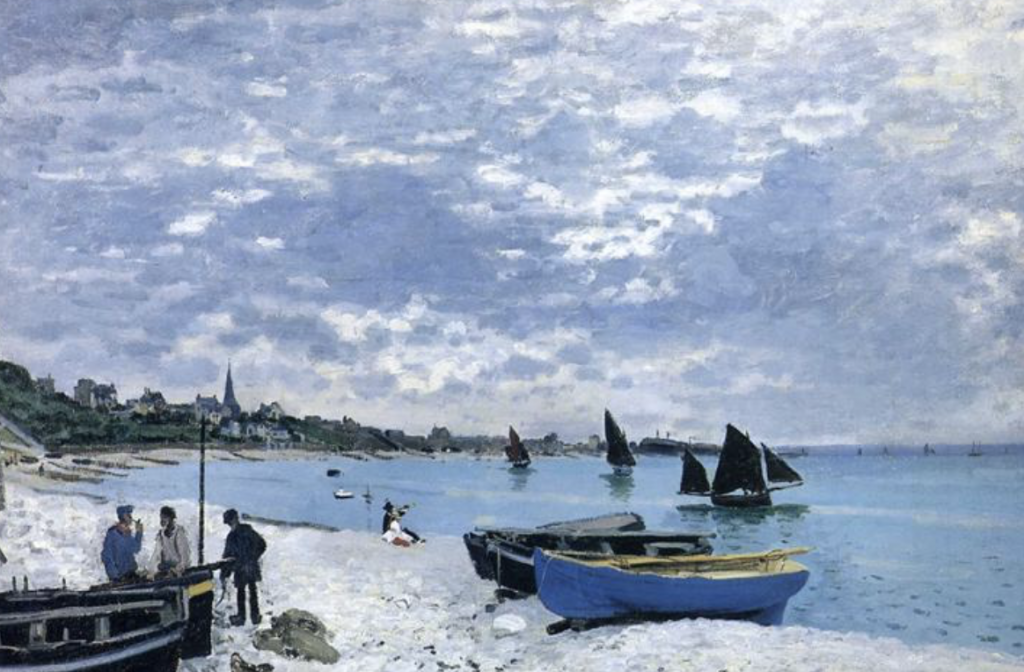
Eugène Boudin, often referred to as the “king of the skies,” was a master of beach scenes and coastal landscapes. “The Beach at Sainte-Adresse,” painted in 1867, captures a lively beach scene near Le Havre, France. Boudin’s keen observation of light and atmosphere is evident in the way he depicts the beachgoers, the waves, and the sky. The painting exudes a sense of leisure and seaside enjoyment, making it a quintessential example of beach painting from the 19th century.
- “Rhye Sands” by David Cox

David Cox was an English landscape painter before the Impressionist era, and he was a big deal in the Birmingham School. Even though people mostly know him for watercolors, towards the end of his career, he started doing a bunch of oil paintings, like one called “Rhye Sands” that shows a beach scene. He tried something new by painting outdoors and captured Victorian folks all bundled up on a Welsh beach. His keen eye caught the power of nature, mixing it up with tiny people, making this beach painting really stand out. It’s like he painted nature’s strength alongside these small human figures, and it hits you right in the feels.
- “A Summer’s Day On The Beach” by Joaquin Sorolla Y Bastida
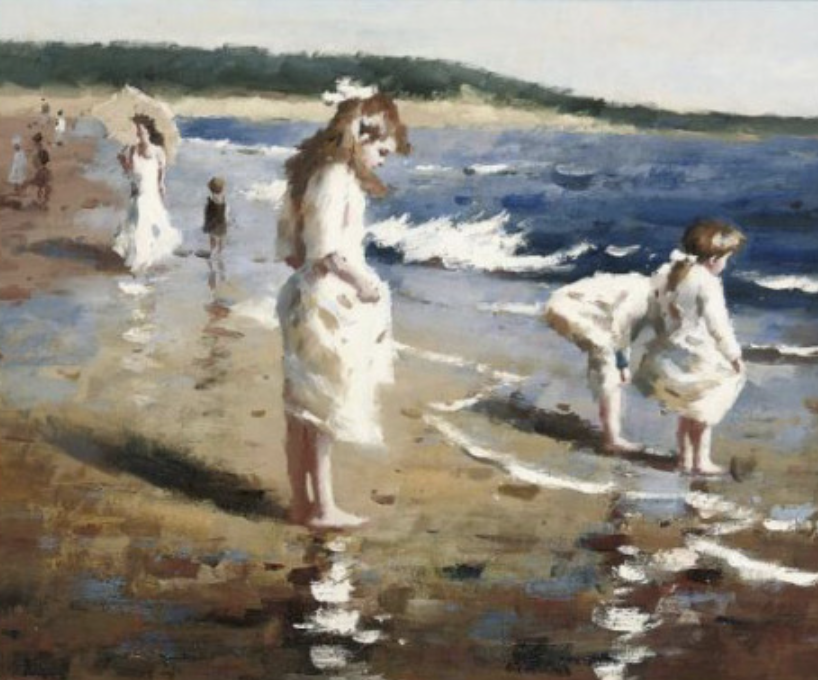
Joaquin Sorolla Y Bastida, a Spanish master of light and colour, created “A Summer’s Day” in 1904. This beach painting showcases a family enjoying a day at the beach, with children playing in the surf and adults lounging under colourful umbrellas. Sorolla’s adept use of sunlight and shade creates a palpable warmth, inviting viewers to feel the sand between their toes and the sea breeze on their faces. “A Summer’s Day” is a testament to Sorolla’s ability to capture the joyous spirit of seaside leisure.
- “Beach Scene” by Edward Hopper
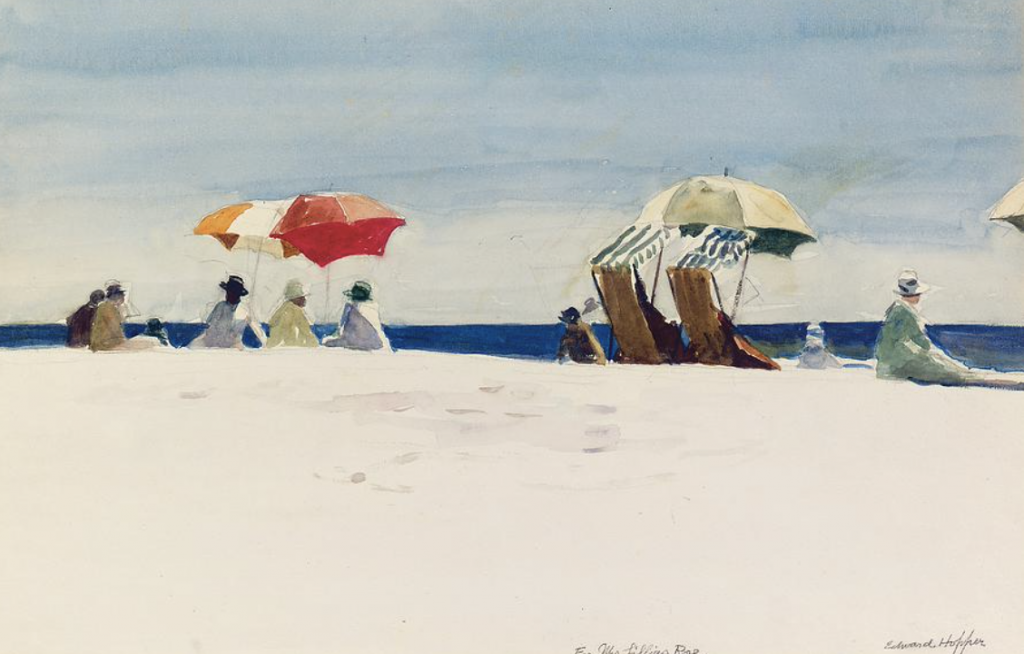
The visual centre of the painting is the grouping of the people on the beach. They are placed on the edge of a large foreground of sand, slightly bleached by the sunlight. The centre of the painting is dominated by a dark blue strip of ocean which separates the edge of the sand and the washed out sky in the background while serving to anchor the figures on the beach.
- “Boats at Collioure” by Andre Derain

Relocating to the bay of Collioure provided Andre Derain an ideal backdrop for exploring light and colour in his art. In his painting “Boats at Collioure,” which edges towards abstraction, Derain captures the daily hustle at the beach. Renowned for his groundbreaking landscape and cityscape works, Derain employs his distinctive style of unreal colour combinations to distort the scene. A key figure in the Fauvism movement, alongside Henri Matisse, Derain holds a significant position as one of the movement’s most influential artists.
Check out top-rated local artists near you!
Are you an artist ? Sign Up











